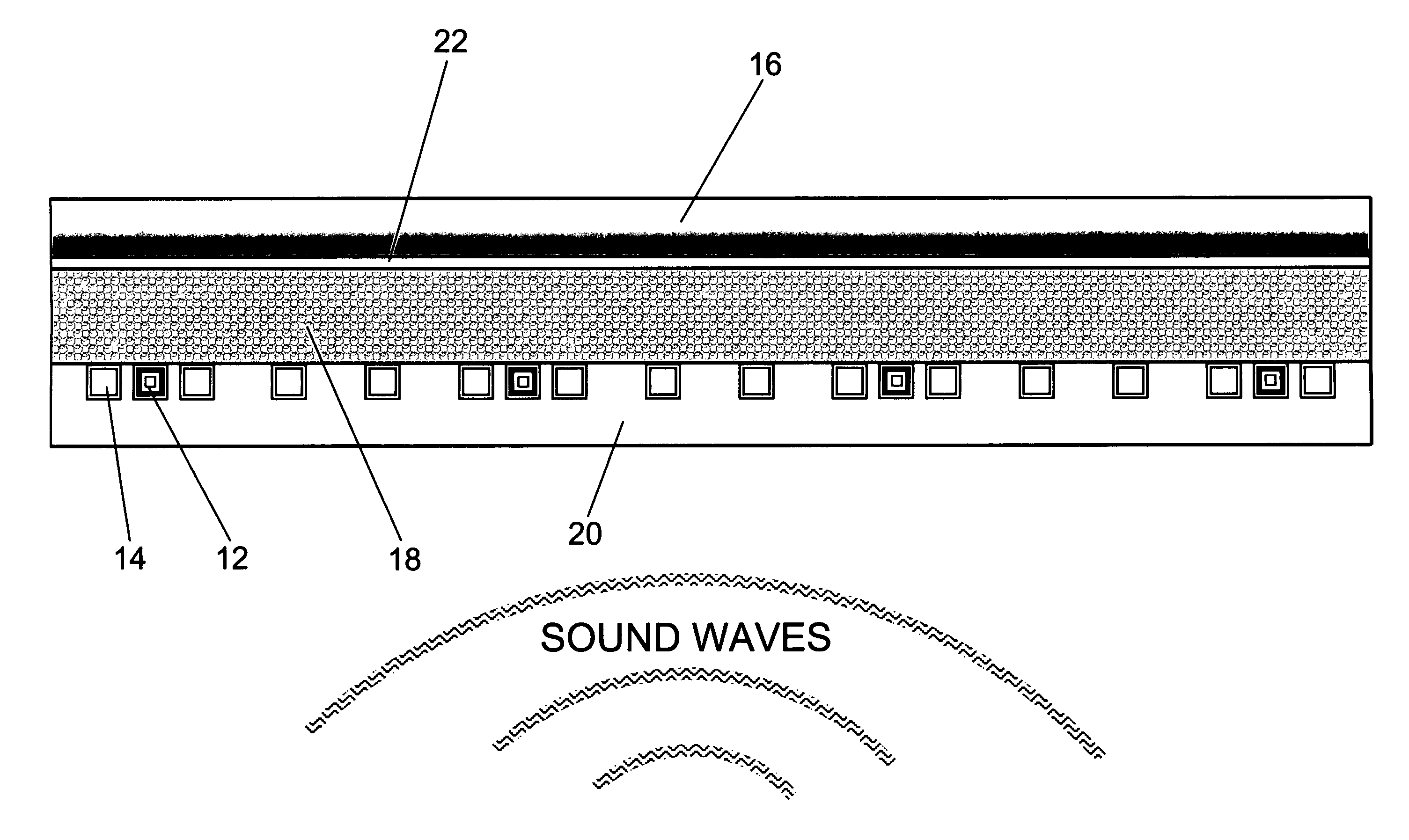Dual response acoustical sensor system
a sensor system and acoustic sensor technology, applied in the field of underwater acoustics, can solve the problems of impracticality of maintenance, restricting or preventing the attachment of instruments to the hull, and towed sensor arrays also suffer, so as to achieve hydrodynamic and acoustic penalties, costs and complexities are added
- Summary
- Abstract
- Description
- Claims
- Application Information
AI Technical Summary
Benefits of technology
Problems solved by technology
Method used
Image
Examples
Embodiment Construction
[0023]Referring now to FIG. 1 and FIG. 2, sensor array 10 includes hydrophones (pressure sensors) 12 and geophones (motion sensors) 14. Hydrophones 12 (four shown in FIG. 1 and FIG. 2) and geophones 14 (fourteen shown in FIG. 1 and FIG. 2) are arrayed along the side of a steel ship hull 16. All of the hydrophones 12 and geophones 14 of array 10 are mounted upon an acoustically compliant layer 18 made of a voided (cellular) neoprene material. Adjacent to acoustically compliant layer 18 is acoustically transparent layer 20, made of a polycarbonate material. Acoustically transparent layer 20 surrounds sensor array 10, serving as a kind of matrix for containing hydrophones 12 and geophones 14. Polyurethane adhesive layer 22 bonds acoustically compliant layer 18 to ship hull 16.
[0024]In inventive practice the acoustically compliant material is, rather than solid, more frequently cellular, for instance a closed-cell foam, a “sponge rubber” or a voided elastomer. An example of an acoustica...
PUM
 Login to View More
Login to View More Abstract
Description
Claims
Application Information
 Login to View More
Login to View More - R&D
- Intellectual Property
- Life Sciences
- Materials
- Tech Scout
- Unparalleled Data Quality
- Higher Quality Content
- 60% Fewer Hallucinations
Browse by: Latest US Patents, China's latest patents, Technical Efficacy Thesaurus, Application Domain, Technology Topic, Popular Technical Reports.
© 2025 PatSnap. All rights reserved.Legal|Privacy policy|Modern Slavery Act Transparency Statement|Sitemap|About US| Contact US: help@patsnap.com



